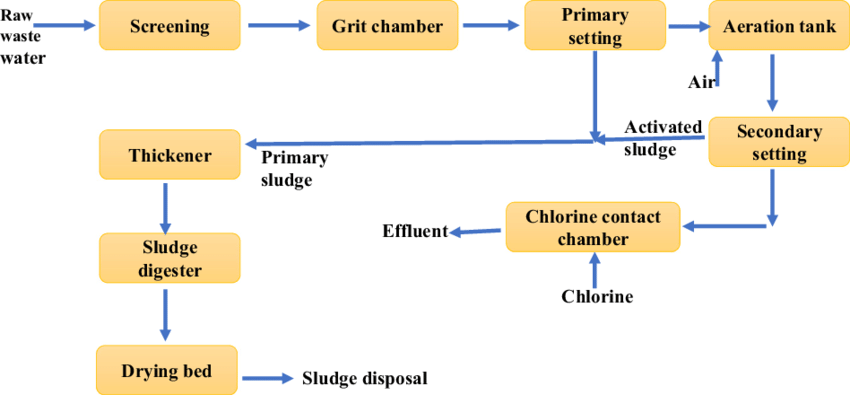Rumored Buzz on Reclaim Waste
Rumored Buzz on Reclaim Waste
Blog Article
6 Simple Techniques For Reclaim Waste
Table of ContentsThe Buzz on Reclaim WasteThe Single Strategy To Use For Reclaim WasteFascination About Reclaim WasteThe 10-Second Trick For Reclaim Waste9 Simple Techniques For Reclaim Waste
Domestic sewer waste refers to the waste and products from a household septic storage tank. The appropriate management and disposal of residential sewage waste need fluid waste to be transferred to a sewer treatment plant where the correct methods and tools are applied to cleanse and dispose of waste.
Industrial waste frequently consists of prospective hazards, such as combustible products or a blend of liquid and strong waste products, and calls for an advanced and thorough disposal procedure. The disposal of industrial waste usually involves the purification of waste prior to transport to make certain secure and proper disposal. Hazardous waste is created from byproducts and overflow of commercial processes and production.
This type of waste can not utilize the very same sewer monitoring transportation or processes as septic or business fluids. The industrial waste monitoring process needs the evaluation and screening of fluid waste prior to it undergoes the disposal process (industrial wastewater treatment). Runoff waste is the liquid waste that comes from overflow and excess stormwater in extremely inhabited locations or cities
Drainage waste can cause contamination and flooding if not taken care of correctly. Find out more regarding drain cleansing and waste administration. Making certain proper waste management can stop calamities and minimize environmental injury. Both individuals in household setups and specialists in business or production sectors can gain from recognizing the processes and policies of fluid waste management.
The Basic Principles Of Reclaim Waste
Call PROS Services today to learn more about our waste administration and disposal services and the appropriate methods to take care of the fluid waste you generate.
(https://reclaim-waste-48112599.hubspotpagebuilder.com/reclaim-waste/expert-liquid-waste-removal-and-disposal-services-your-complete-guide)This so-called 'wastewater' is not just a crucial resource but, after therapy, will be launched to our land, rivers or the ocean. Used water from toilets, showers, baths, kitchen area sinks, laundries and commercial processes is recognized as wastewater.

water used to cool equipment or tidy plant and tools). Stormwater, a form of wastewater, is runoff that moves from farming and urban locations such as roof coverings, parks, yards, roads, courses and rain gutters into stormwater drains, after rainfall. Stormwater streams without treatment directly to neighborhood creeks or rivers, at some point getting to the sea.
Reclaim Waste for Dummies
In Queensland, a lot of wastewater is dealt with at sewer treatment plants. Wastewater is moved from residential or industrial websites through a system of drains and pump stations, recognized as sewerage reticulation, to a sewage therapy plant. City governments construct, maintain and operate most sewer therapy plants. Operators are accredited under the Environmental Defense Act 1994 to discharge cured wastewater at an appropriate ecological criterion into waterways.
The Division of Natural Resources recommends city governments concerning handling, operating and keeping sewage systems and therapy plants. In unsewered areas, city governments may need owners to set up specific or house sewer therapy systems to treat domestic wastewater from toilets, kitchens, restrooms and laundries. The Division of Natural Resources authorizes using home systems when they are shown to be effective.
In some brand-new class, therapy of some stormwater to get rid of trash, sand and gravel has actually begun making use of gross contaminant catches. Wastewater treatment takes place in 4 stages: Removes strong issue.
Uses small living microorganisms knows as micro-organisms to break down and get rid of remaining dissolved wastes and great particles. Micro-organisms and wastes are integrated in the sludge.
What Does Reclaim Waste Do?
Nutrient elimination is not offered in all sewer treatment plants due to the fact that it requires expensive specialized equipment. It is becoming more common in Queensland. Clear fluid effluent produced after therapy may still consist of disease-causing micro-organisms. If this effluent is released into waterways such as rivers or the sea, the micro-organisms will at some point pass away out.

Many wastewater streams right into the sewerage system. Under the Act, local federal governments provide approvals and permits for ecologically relevant tasks (Ages) including wastewater releases that might have a neighborhood effect.
Reclaim Waste - The Facts
Surveillance offers accurate information concerning water high quality and can confirm that licence conditions are being satisfied. The details gotten through tracking supplies the basis for making water top quality decisions.
Report this page